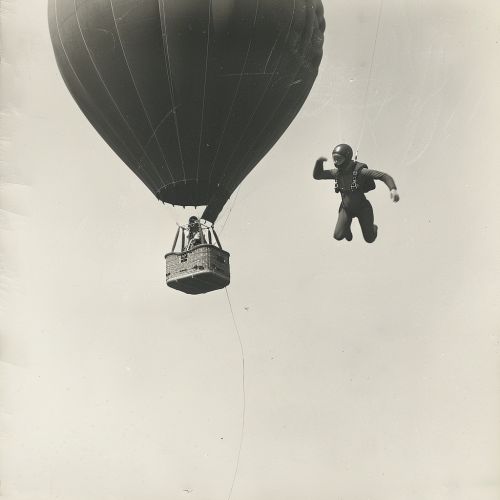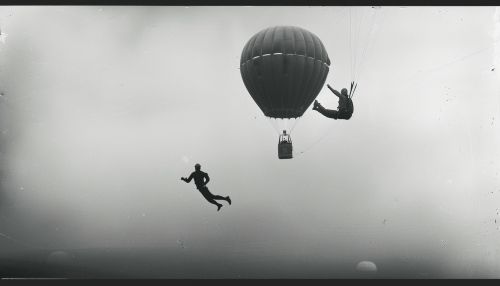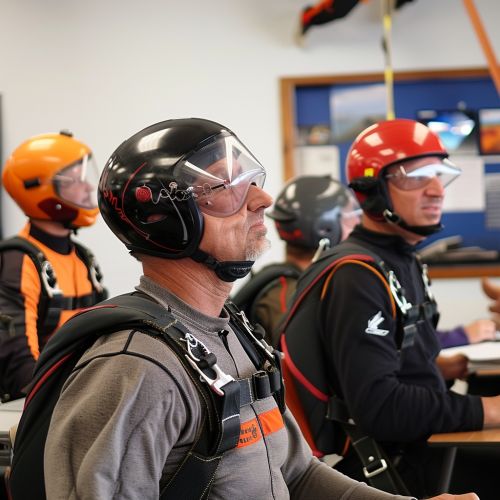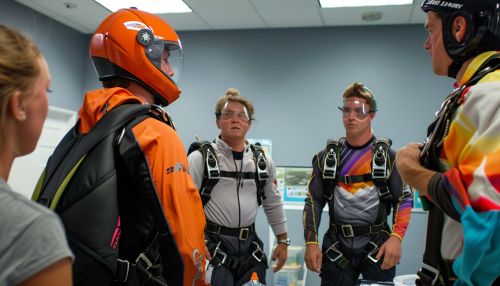Skydiving Training
Introduction
Skydiving, also known as parachuting, is a high-adrenaline sport that involves jumping from an aircraft and free-falling before deploying a parachute to slow down the descent. The sport requires extensive training and knowledge of safety procedures, equipment, and techniques. This article provides a comprehensive overview of skydiving training, from the initial ground instruction to advanced skills development.
History of Skydiving
The history of skydiving can be traced back to the late 18th century when Frenchman André-Jacques Garnerin made successful descents using a canvas canopy and a small basket tethered beneath a hot-air balloon. The development of skydiving as a sport, however, didn't begin until the early 20th century.


Ground Training
Before making their first jump, all skydivers must undergo ground training. This involves learning about the equipment, exit techniques, freefall body position, canopy control, and emergency procedures.
Equipment Knowledge
Understanding the skydiving equipment is crucial for safety. This includes the main parachute, reserve parachute, harness/container system, automatic activation device (AAD), and altimeter.
Exit Techniques
Different exit techniques are used depending on the type of aircraft. The most common types of aircraft in skydiving are the Cessna 182, Twin Otter, and Skyvan.
Freefall Body Position
The correct freefall body position, also known as the "arch", is essential for stability during freefall. This involves arching the back, keeping the legs slightly bent and spread apart, and extending the arms out to the sides.
Canopy Control
After the parachute is deployed, skydivers must know how to steer it to a safe landing area. This involves learning how to use the steering toggles to control the direction and speed of the parachute.
Emergency Procedures
Skydivers must be prepared to handle any emergencies that may occur during the jump. This includes equipment malfunctions, collisions with other skydivers, and adverse weather conditions.
First Jump Courses
First jump courses (FJC) are designed to prepare new skydivers for their first solo jump. These courses typically include both classroom instruction and practical training.


Tandem Skydiving
Many first-time skydivers choose to do a tandem skydive, where they are harnessed to an experienced instructor who controls the jump. This allows the student to experience freefall without the responsibility of deploying the parachute or steering it to the landing area.
Accelerated Freefall (AFF)
Accelerated Freefall (AFF) is another method of training new skydivers. In this method, the student makes their first jump with two instructors holding onto them during freefall. The student is responsible for deploying their own parachute.
Advanced Training
After completing their first solo jump, skydivers can pursue advanced training to develop their skills and learn new disciplines.
Formation Skydiving
Formation skydiving involves multiple skydivers linking together in various formations during freefall. This requires precise control and coordination.
Freeflying
Freeflying is a type of skydiving where the skydiver falls in any orientation other than the traditional belly-to-earth position. This includes head-down, sit-flying, and back-flying.
Wingsuit Flying
Wingsuit flying involves wearing a suit with fabric wings that increase surface area and allow the skydiver to glide through the air.
Safety and Regulations
Skydiving is regulated by national organizations, such as the United States Parachute Association (USPA) in the U.S. These organizations set safety standards and regulations, certify instructors and parachute riggers, and provide resources for skydivers.
Conclusion
Skydiving training is a comprehensive process that involves learning about equipment, techniques, and safety procedures. Whether a person is preparing for their first jump or looking to advance their skills, proper training is essential for a safe and enjoyable skydiving experience.
